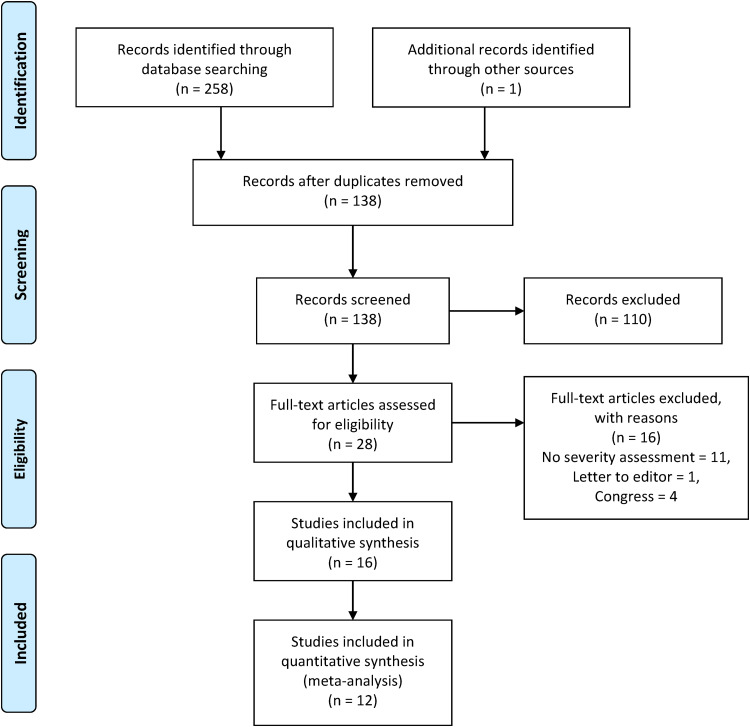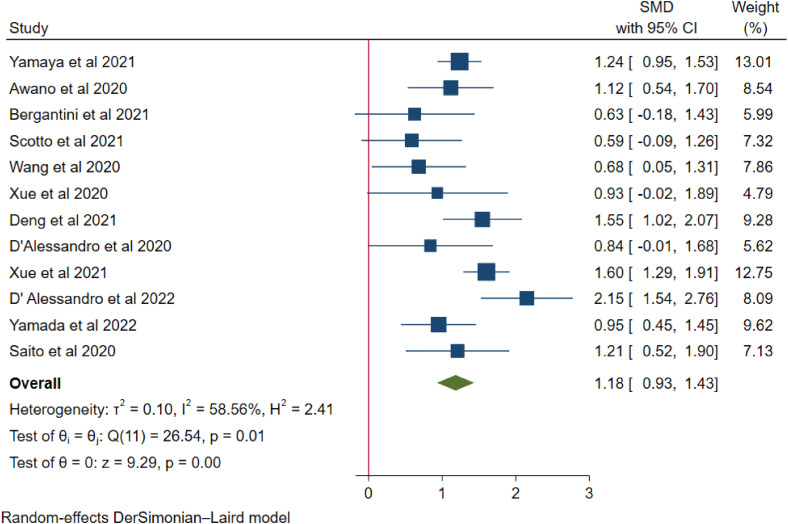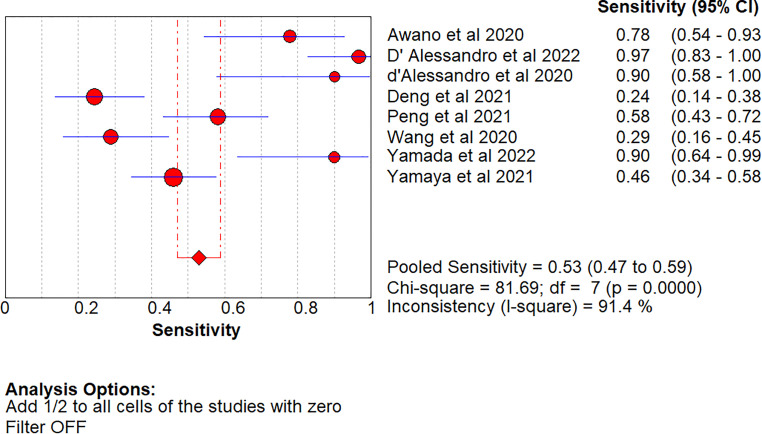Serum Krebs von den Lungen-6 for Predicting the Severity of COVID-19: A Systematic Review, Meta-Analysis, and Trial Sequence Analysis.
IF 0.9
Q4 RESPIRATORY SYSTEM
Clinical Medicine Insights-Circulatory Respiratory and Pulmonary Medicine
Pub Date : 2023-01-01
DOI:10.1177/11795484231152304
引用次数: 1
Abstract
OBJECTIVE This systematic review and meta-analysis aimed to find the association between serum Krebs von den Lungen-6 (KL-6) and the severity of Coronavirus disease 2019 (COVID-19) infection. DATA SOURCES Databases of Embase, PubMed, Web of Science, Science Direct, and Google Scholar were searched for studies reporting KL-6 levels in COVID-19 patients, published between January 2020 and September 30 2022. DATA SYNTHESIS For comparison between the groups, standard mean difference (SMD) and 95% confidence intervals (CI) were computed as the effect sizes. Sensitivity, specificity, positive likelihood ratio (PLR), and negative likelihood ratio (NLR) were measured to assess the diagnostic power of KL-6. In addition, the summary receiver operating characteristics curve (sROC) was constructed to summarize the true positive (TP), and false positive (FP) rates. To validate the findings of meta-analysis, Trial Sequential Analysis (TSA) was conducted. RESULTS Altogether 497 severe COVID-19 patients and 934 non-severe (mild to moderate) COVID-19 patients were included. Pooling of 12 studies indicated that the serum KL-6 level had significant association with severity of COVID-19 infection: standard mean difference = 1.18 (95% CI: 0.93-1.43), p = 0.01; I2: 58.56%]. Pooled diagnostic parameters calculated from eight studies were: sensitivity 0.53 (95% CI: 0.47-0.59); specificity 0.90 (95% CI: 0.88-0.93); positive likelihood ratio 4.80 (95% CI: 3.53-6.53); negative likelihood ratio 0.46 (95% CI: 0.32-0.68); and area under curve: 0.8841. Additionally, TSA verified the adequacy of sample size and robustness of the meta-analysis. CONCLUSION Serum KL-6 level has a moderate degree of correlation with the severity of COVID-19 infection but has low sensitivity. So, it is not recommended as a screening test for severe COVID-19 infection.



血清克雷布斯·冯·登·伦根-6预测COVID-19严重程度:系统评价、荟萃分析和试验序列分析
目的:本系统综述和荟萃分析旨在发现血清克雷布斯·von den Lungen-6 (KL-6)与2019冠状病毒病(COVID-19)感染严重程度的关系。数据来源:检索Embase、PubMed、Web of Science、Science Direct和Google Scholar数据库,检索2020年1月至2022年9月30日发表的报告COVID-19患者中KL-6水平的研究。数据综合:对于组间比较,计算标准均差(SMD)和95%置信区间(CI)作为效应量。测定KL-6的敏感性、特异性、阳性似然比(PLR)和阴性似然比(NLR),评估KL-6的诊断能力。此外,构建总结接收者工作特征曲线(sROC),总结真阳性率(TP)和假阳性率(FP)。为了验证meta分析的结果,进行了试验序贯分析(TSA)。结果:共纳入重症患者497例,非重症(轻至中度)患者934例。汇总12项研究显示,血清KL-6水平与COVID-19感染严重程度有显著相关性:标准平均差异= 1.18 (95% CI: 0.93-1.43), p = 0.01;I2: 58.56%)。从8项研究中计算的合并诊断参数为:敏感性0.53 (95% CI: 0.47-0.59);特异性0.90 (95% CI: 0.88-0.93);阳性似然比4.80 (95% CI: 3.53-6.53);负似然比0.46 (95% CI: 0.32-0.68);曲线下面积:0.8841。此外,TSA验证了样本量的充分性和meta分析的稳健性。结论:血清KL-6水平与COVID-19感染严重程度有中等程度的相关性,但敏感性较低。因此,不建议将其作为COVID-19严重感染的筛查试验。
本文章由计算机程序翻译,如有差异,请以英文原文为准。
求助全文
约1分钟内获得全文
求助全文
来源期刊

Clinical Medicine Insights-Circulatory Respiratory and Pulmonary Medicine
RESPIRATORY SYSTEM-
CiteScore
4.20
自引率
0.00%
发文量
9
审稿时长
8 weeks
 求助内容:
求助内容: 应助结果提醒方式:
应助结果提醒方式:


